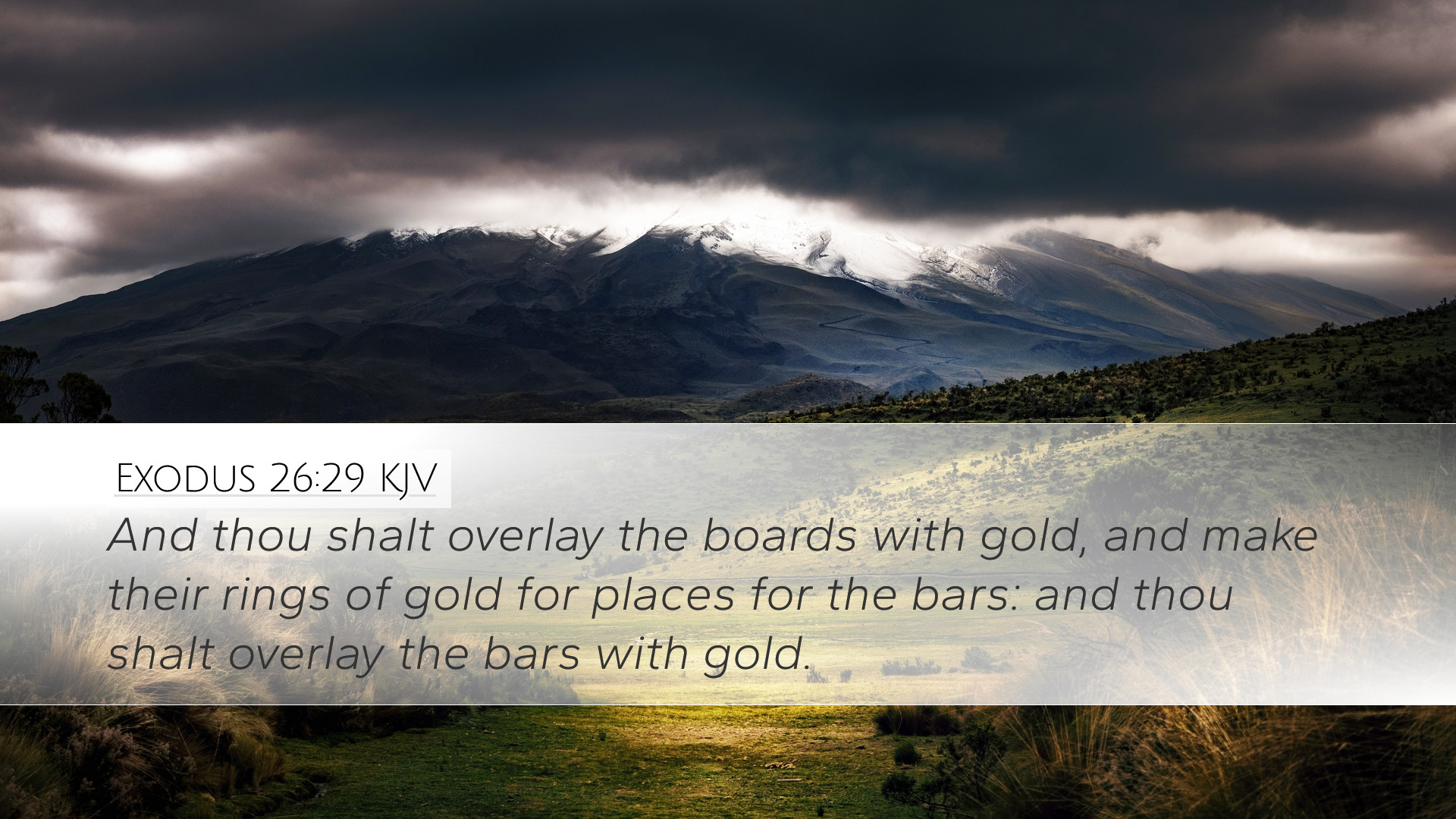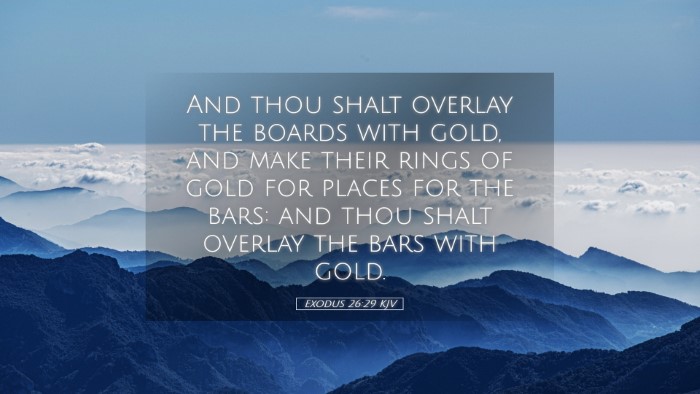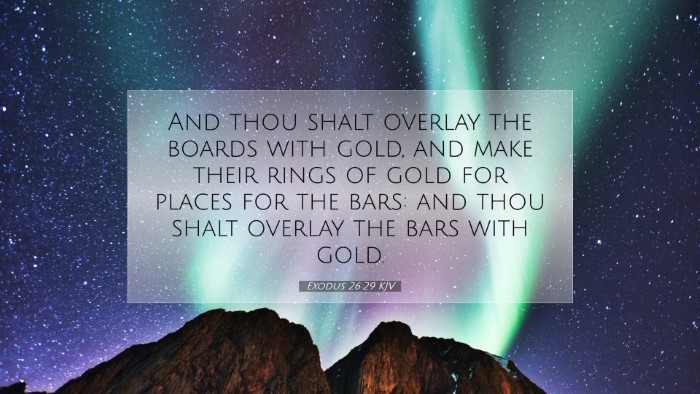Exodus 26:29 - Commentary and Insights
The verse Exodus 26:29 states:
"And thou shalt make the boards for the tabernacle of shittim wood, standing up."
This passage is situated within God's instructions to Moses for constructing the tabernacle, which serves as the meeting place between God and His people.
Overview of the Tabernacle
The tabernacle was not merely a tent; it was a significant structure that represented God's presence, holiness, and the covenant relationship with Israel.
Understanding the meaning and symbolism behind the materials used, particularly the shittim wood, offers deeper theological insights.
Materials Used in the Tabernacle
The command to use shittim wood (often identified with acacia wood) is noteworthy for several reasons:
-
Durability: Shittim wood is known for its resilience and ability to withstand harsh conditions, which symbolizes God’s enduring presence and the strength of His covenant.
-
Beauty: The wood has a striking appearance that could represent the beauty of holiness and the splendor of the divine.
-
Spiritual Significance: The choice of materials can also be seen as representing Christ, who is both divine and human, portrayed through the durability and the beauty of the wood.
Commentary Insights
Matthew Henry
Matthew Henry emphasizes that the use of shittim wood signifies the divine nature of God's dwelling among His people.
He notes that the structure of the tabernacle, built of this particular wood, provides a lesson on how God sustains and protects His people in their journey.
Albert Barnes
Albert Barnes elaborates on the construction details, asserting that each board representing a tribe indicates the communal aspect of worship.
He points out that the boards standing upright signify stability and the permanence of God's presence amongst His people.
He draws parallels to the Church, where believers are likened to living stones, working together to form a holy edifice.
Adam Clarke
Adam Clarke focuses on the spiritual interpretations of the tabernacle components.
He articulates that the boards made of shittim wood represent the strength and stability found in one’s faith and relationship with God.
Clarke highlights the upright positioning of the boards as a metaphor for righteousness and integrity in the life of a believer.
Theological Implications
The construction of the tabernacle and its materials has profound theological implications:
-
Divine Presence: The tabernacle serves as a physical reminder of the Creator's willingness to commune with humanity.
It embodies the desire of God to dwell among His people.
-
Holiness of God: The materials chosen signify the holiness of God, instructing worshipers on the reverence due to Him.
It reminds believers of the separation required between mankind and the divine, necessitating atonement and sacrifice.
-
Community and Worship: The board's upright structure stresses communal worship and solidarity amongst believers.
Each board contributing to a unified whole symbolizes the body of Christ, where each member has a distinct yet essential role.
-
Foreshadowing of Christ: A deeper interpretation links the tabernacle to Christ as the ultimate meeting place between God and man,
highlighting the transition from the old covenant to the new covenant in Christ’s sacrifice.
Conclusion
Exodus 26:29 invites pastors, theologians, and students of the Word to reflect on the rich symbolism of the tabernacle and its construction.
The choice of shittim wood and the structural integrity of the boards illustrate theological themes of God's presence, holiness,
community, and the redemptive work of Christ. Understanding these elements can deepen one's appreciation for God's Word and its relevance in the life of the believer.


